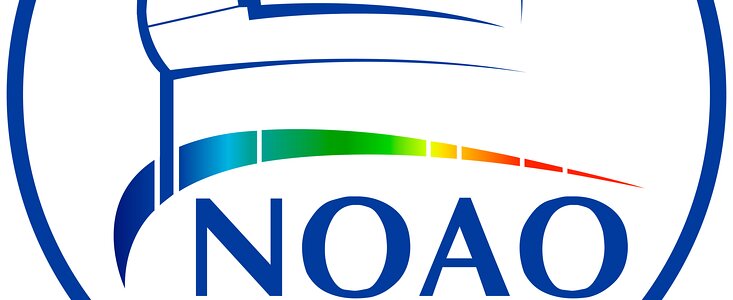Imaging the Universe with 3-D Holographic Gratings
31 May 1999
Dr. Samuel Barden, astronomer at the National Science Foundation's National Optical Astronomy Observatories in Tucson, Arizona, has partnered with Mr. Willis Colburn and Mr. James Arns at Kaiser Optical Systems, Inc. (KOSI), Ann Arbor, Michigan for the development of large format spectroscopic gratings using holographic technology for astronomical applications funded by the National Science Foundation through the Advanced Technologies and Instrumentation Program in the division of Astronomy. These new technology gratings can provide information at multiple regions of the spectrum simultaneously, with higher efficiency, less cost, and greater durability than the conventional grating technology that astronomers have relied on for over a hundred years.
Holograms have become commonplace on credit cards and in Hollywood special effects. KOSI has developed a manufacturing process to produce high quality scientific gratings based on recent holographic technology that has not previously been in wide use for gratings. The NOAO and KOSI development work takes this existing technology to the next level in developing devices to disperse light from astronomical objects with performance superior to classical, surface ruled gratings. The efforts to produce high quality, large format "Volume-Phase Holographic Gratings" for the demanding astronomical applications support the development of other grating applications for telecommunications, manufacturing process control, and other areas utilizing this technology.
Astronomical holographic gratings are made by exposing a gelatin material to a laser light source, swelling the gelatin with water, and then rapidly drying it in a bath of alcohol. Areas of gelatin collapse to a density that is characteristic of the intensity of light they were exposed to, resulting in a gelatin structure that is not uniform throughout. These differences in density are responsible for the light diffracting properties of the grating. The joint NOAO and KOSI work produces highly tuned gratings optimized for astronomical applications. When properly sealed from exposure to any moisture or humidity, the grating materials can have optimum performance over at least 20 years.
Future efforts will include upgrading the facilities at KOSI to make larger format gratings. Classical surface gratings are limited to sizes of about 8 by 16 inches. VPH grating technology should be capable of producing gratings as large as 15 by 30 inches and possibly up to 40 inches in size.
The exciting potential of these gratings has already spawned numerous spectrograph concepts being considered by several observatories world wide. The National Optical Astronomy Observatories are exploring a spectrograph concept which would utilize these gratings for the simultaneous observation of thousands of objects over the full imaged field of their 4-meter telescopes. The SOAR consortium, of which NOAO is a member, is implementing VPH grating technology into its set of spectrographs. The Anglo-Australian Observatory is currently esigning a spectrograph to replace its decades old spectrograph. The European Southern Observatory has also recently acquired a VPH grating for implementation into a spectrograph on the VLT.
Notes
The National Optical Astronomy Observatories is operated by the Association of Universities for Research in Astronomy, Inc. under cooperative agreement with the National Science Foundation.
Links
Contacts
Suzanne Jacoby
NOAO Press Officer
Tel: (520) 318-8364
Email: sjacoby@noao.edu
Dr. Samuel Barden
NOAO Scientist
Tel: (520) 318-8263
Email: sbarden@noao.edu



